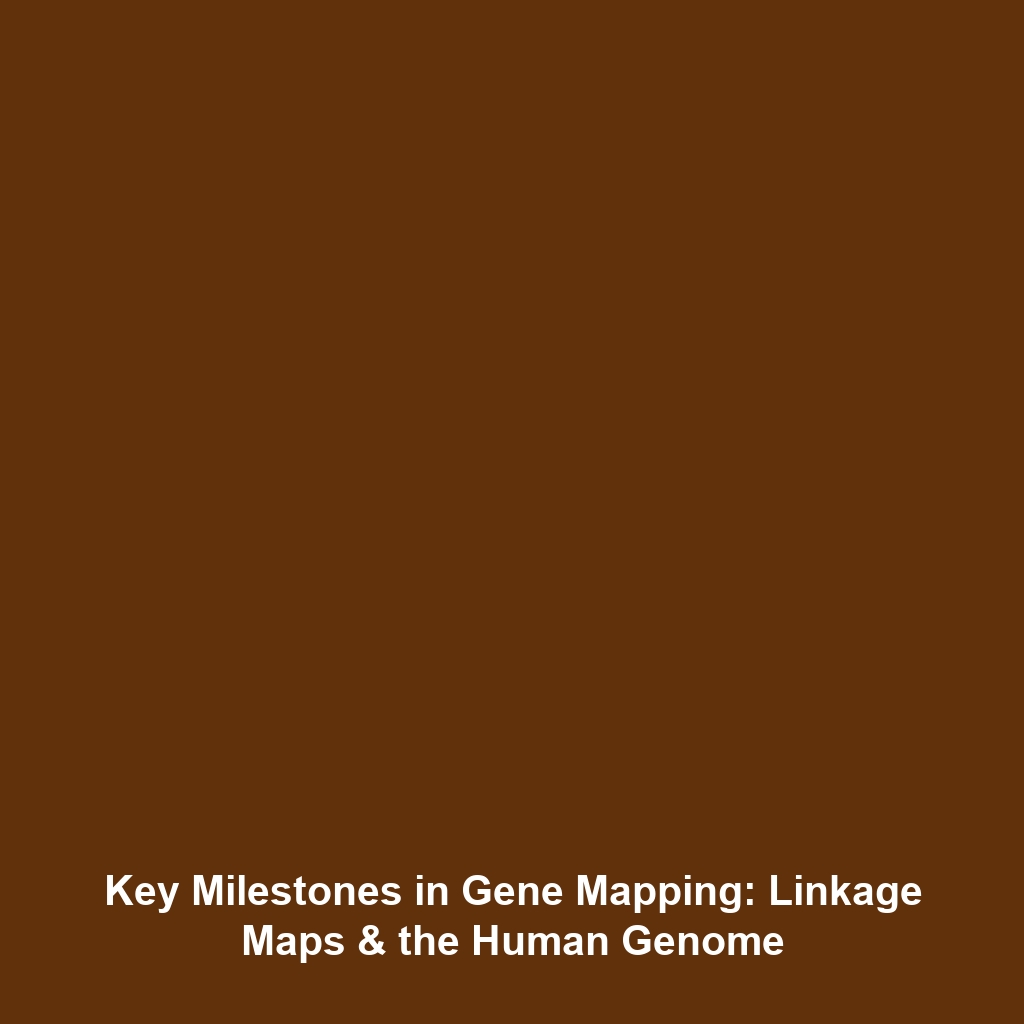Key Milestones: Early Gene Mapping Efforts and Genetic Linkage Maps
Introduction
The significance of early gene mapping efforts and the development of genetic linkage maps cannot be understated within the broader context of the Human Genome Project. These pioneering milestones laid the groundwork for our understanding of the human genome, enabling researchers to identify the functions of various genes and their contributions to human health and disease. By mapping genetic markers and establishing the relationships between genes, scientists were able to facilitate the sequencing of the entire human genome, which has profound implications for genetics and biotechnology. This article delves into the early milestones of gene mapping and linkage mapping, contextualizing their importance within the Human Genome Project and highlighting their lasting impact.
Key Concepts
Gene Mapping
Gene mapping involves determining the specific locations of genes on chromosomes and analyzing their roles in inherited traits. This process is essential in genetics, as it offers insights into how traits are passed down through generations. Historically, gene mapping began with simple Mendelian traits and has evolved to incorporate complex polygenic traits.
Genetic Linkage Maps
Genetic linkage maps represent the relative positions of genes based on the frequency of recombination during meiosis. By utilizing these maps, researchers can predict the inheritance patterns of alleles and better understand the genetic architecture of various organisms. These maps became crucial during the Human Genome Project, guiding efforts to sequence the human genome accurately.
Applications and Real-World Uses
The applications of early gene mapping efforts and genetic linkage maps are vast, particularly concerning the objectives of the Human Genome Project. Key applications include:
- Identifying Genetic Disorders: Gene mapping has enabled the identification of genes associated with hereditary diseases, leading to better diagnostics and patient management.
- Personalized Medicine: Genetic linkage maps facilitate the understanding of individual genetic profiles, enhancing personalized treatment options based on genetic predispositions.
- Conservation Biology: Gene mapping assists in the preservation of endangered species by understanding their genetic diversity and resilience.
Current Challenges
Despite significant advancements, several challenges persist in the study and application of early gene mapping efforts and genetic linkage maps within the framework of the Human Genome Project:
- Complexity of the Human Genome: The vast number of genetic interactions makes it difficult to establish clear causal relationships between genes and traits.
- Technological Limitations: While sequencing technologies have advanced, the analysis and interpretation of complex genomic data remain challenging.
- Ethical Considerations: Ensuring the ethical use of genetic data, particularly in personal and clinical contexts, continues to raise concerns.
Future Research and Innovations
The future of gene mapping and genetic linkage maps is poised for significant advancements driven by innovations in technology and research methods:
- Next-Generation Sequencing: Technologies such as CRISPR and single-cell sequencing are enhancing our ability to conduct precise genomic analyses.
- Computational Genomics: Improved algorithms and models are emerging for better analysis of complex genetic data, leading to deeper insights into gene function.
- Collaboration and Open Science: Global collaboration among researchers is expected to propel the discovery of gene functions and interactions.
Conclusion
In summary, early gene mapping efforts and the creation of genetic linkage maps represent foundational milestones in the Human Genome Project. Their implications are vast, affecting fields ranging from medicine to evolutionary biology. As we look ahead, continued research and technological innovations promise to deepen our understanding of the human genome and pave the way for groundbreaking advancements in various applications. For further reading on the Human Genome Project and its influence on modern genetics, consider exploring related articles on genomics and bioinformatics.
